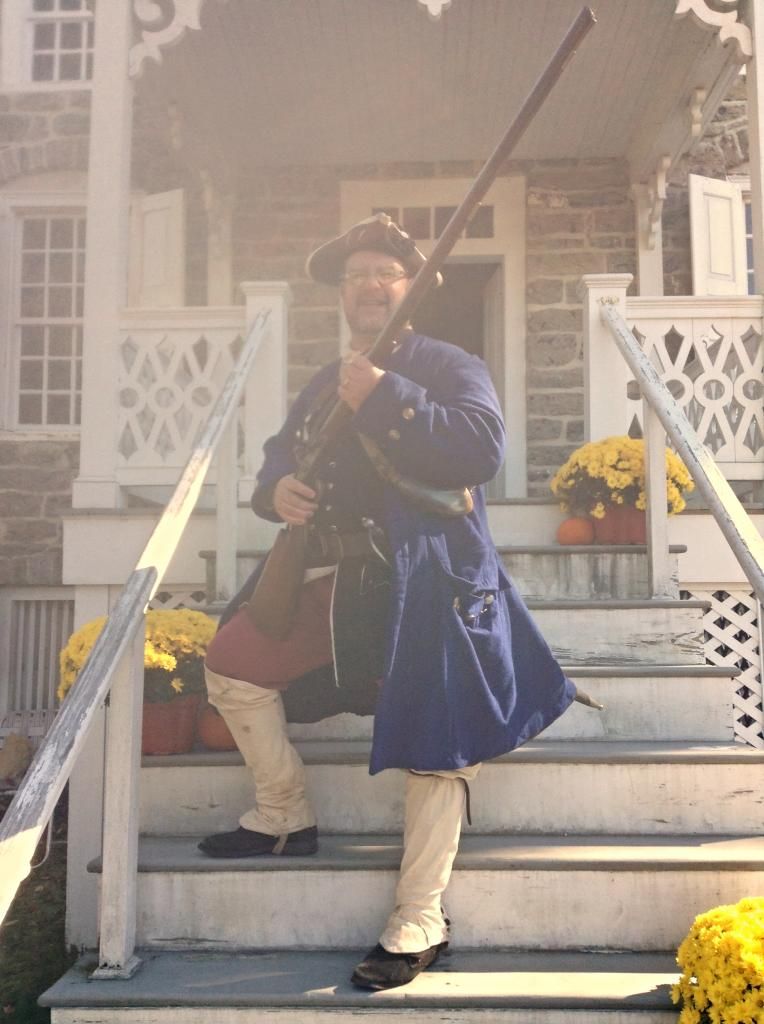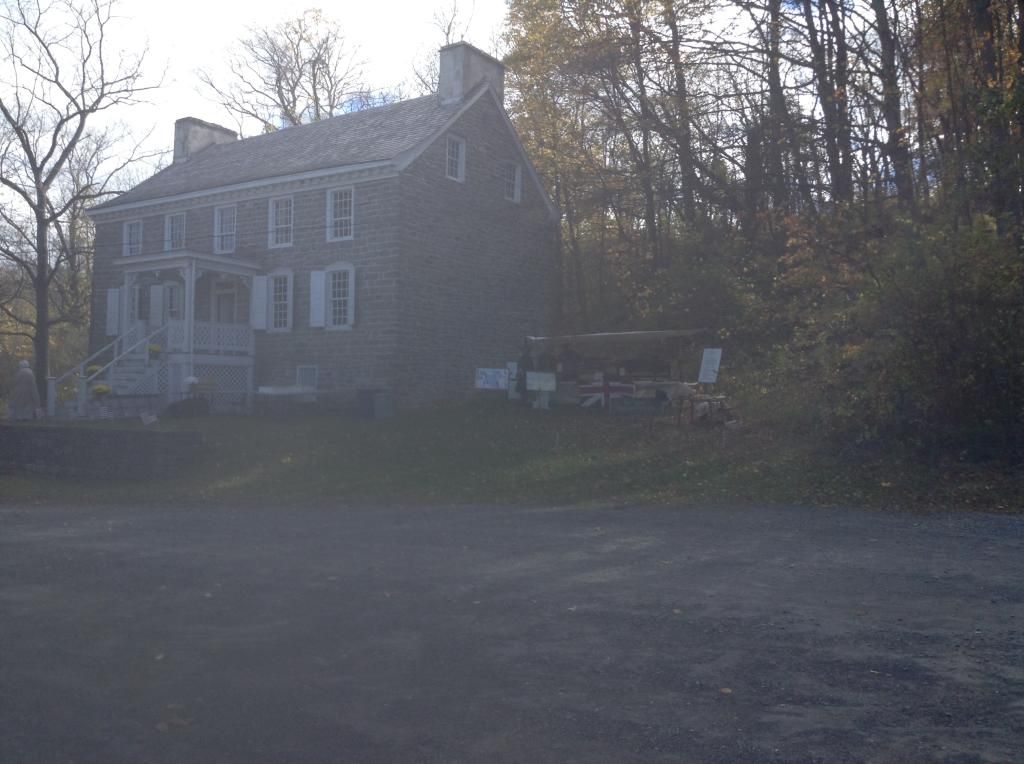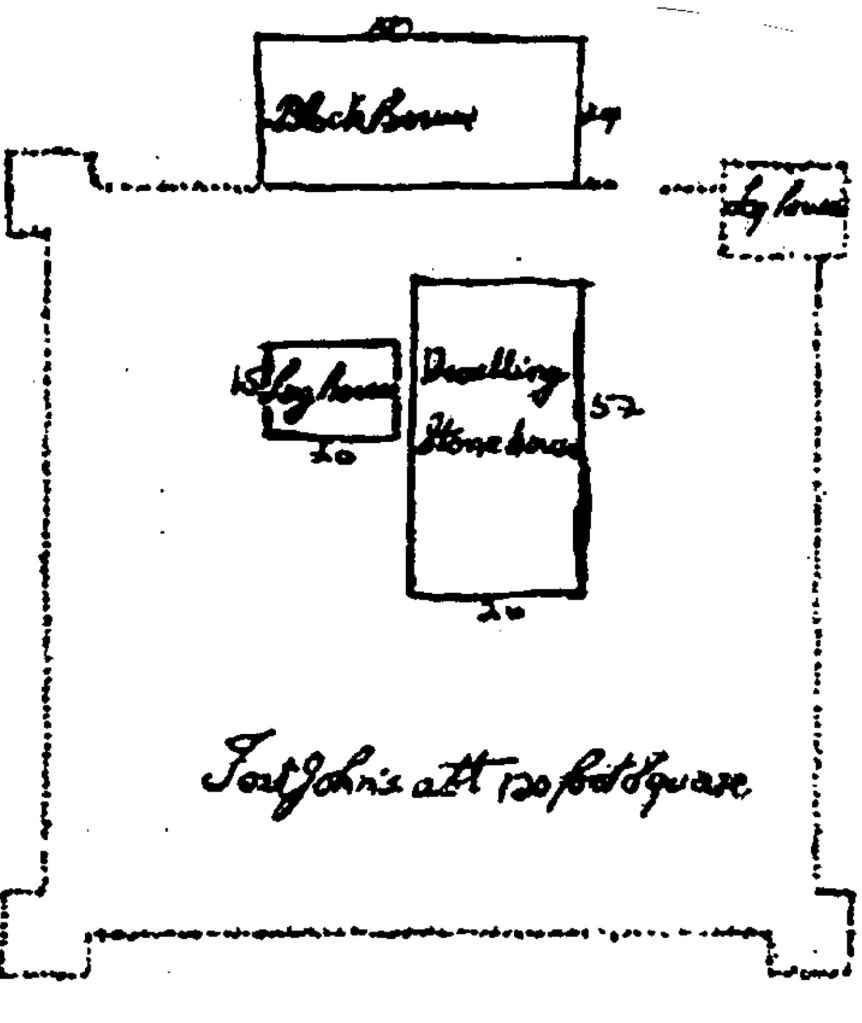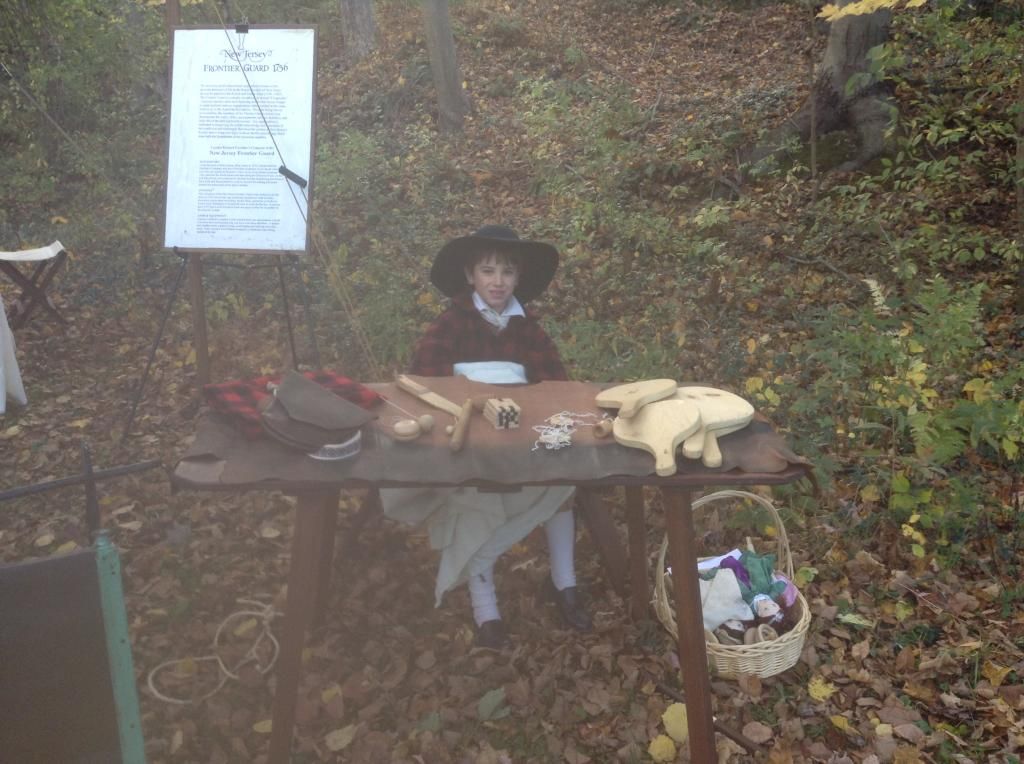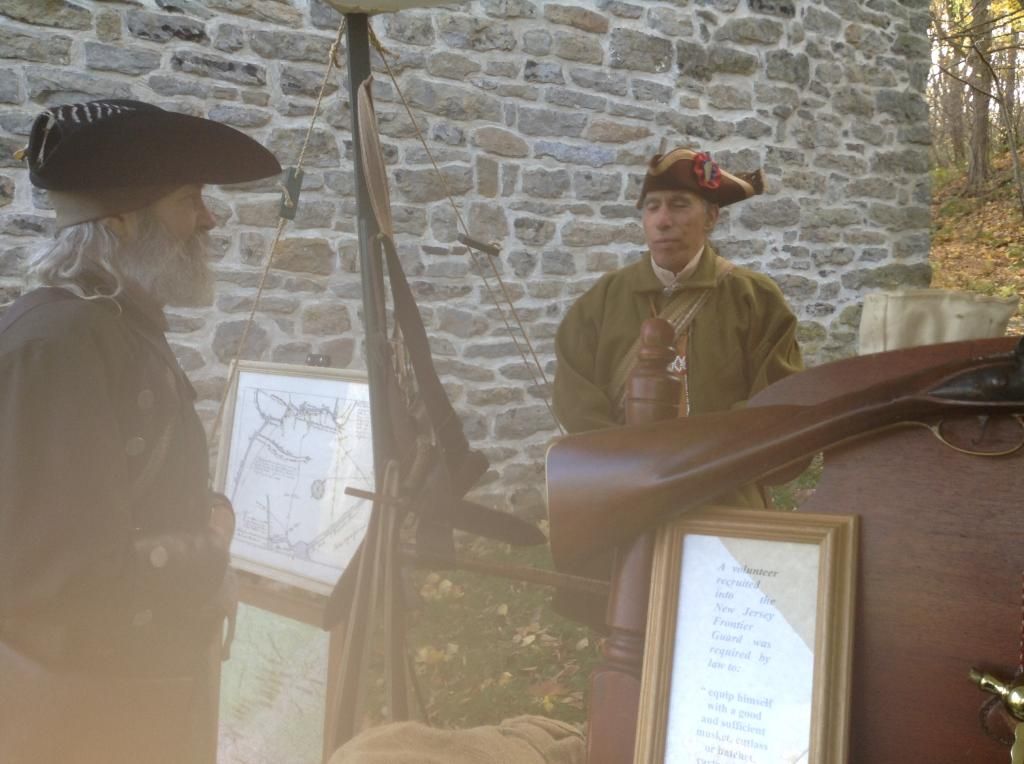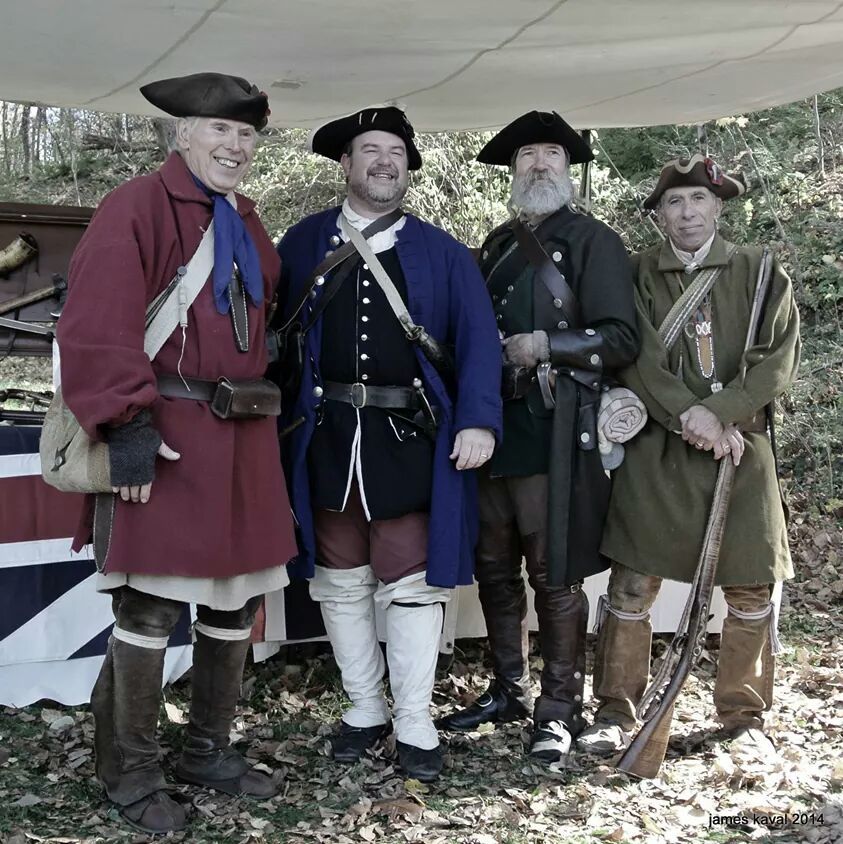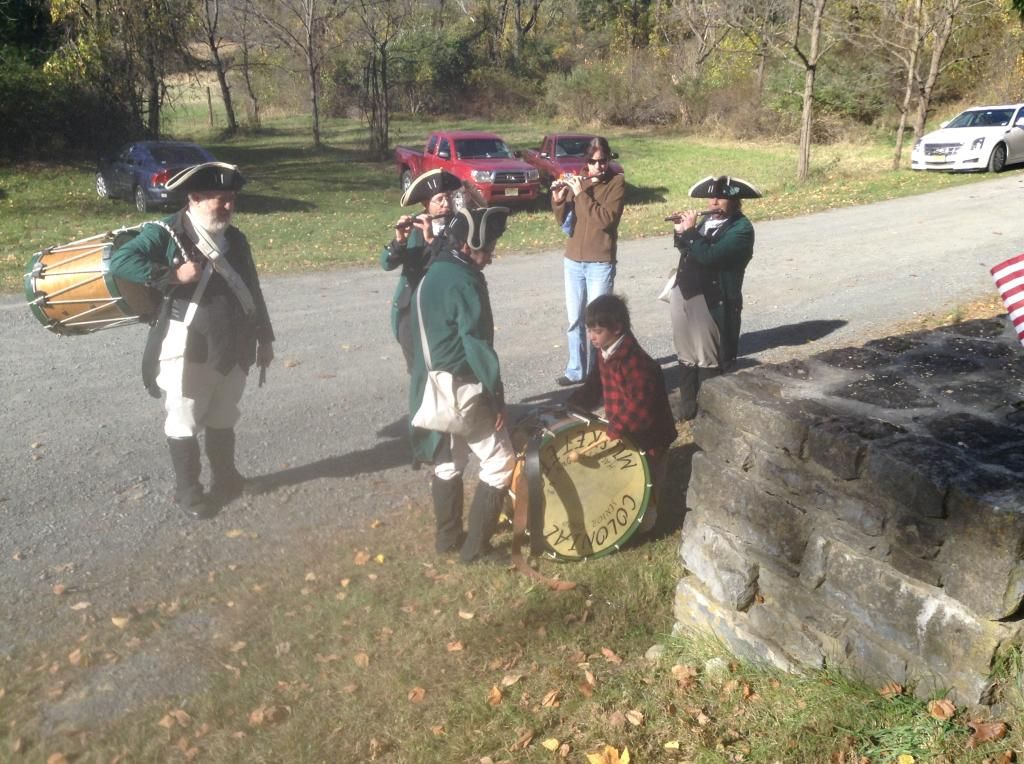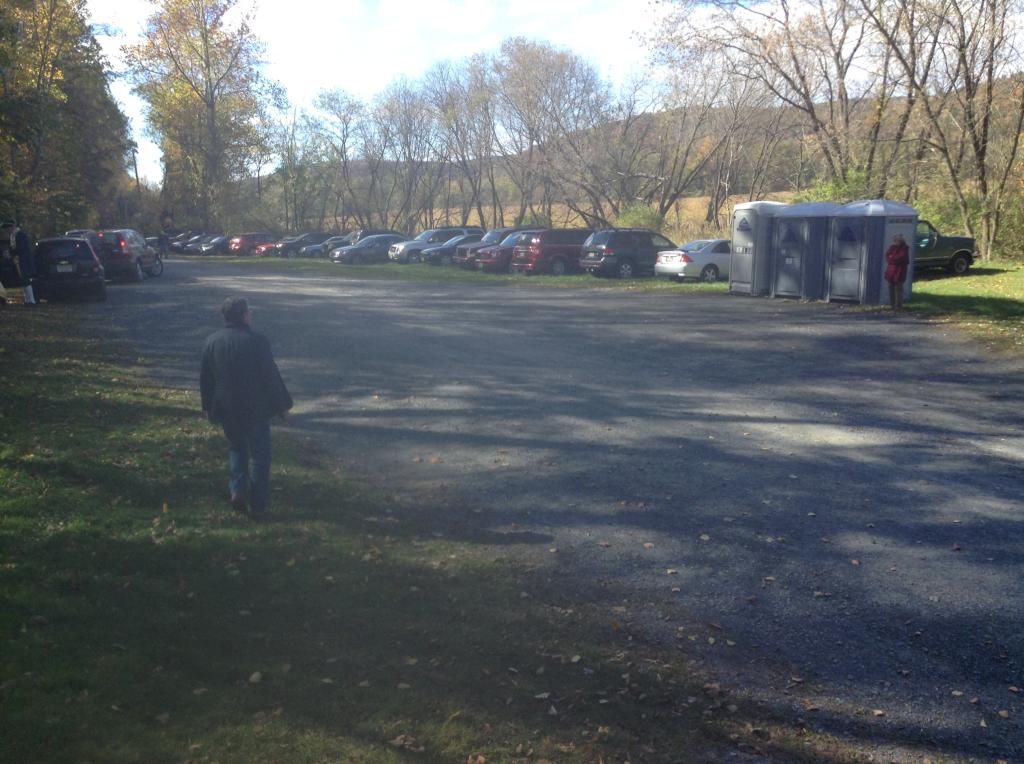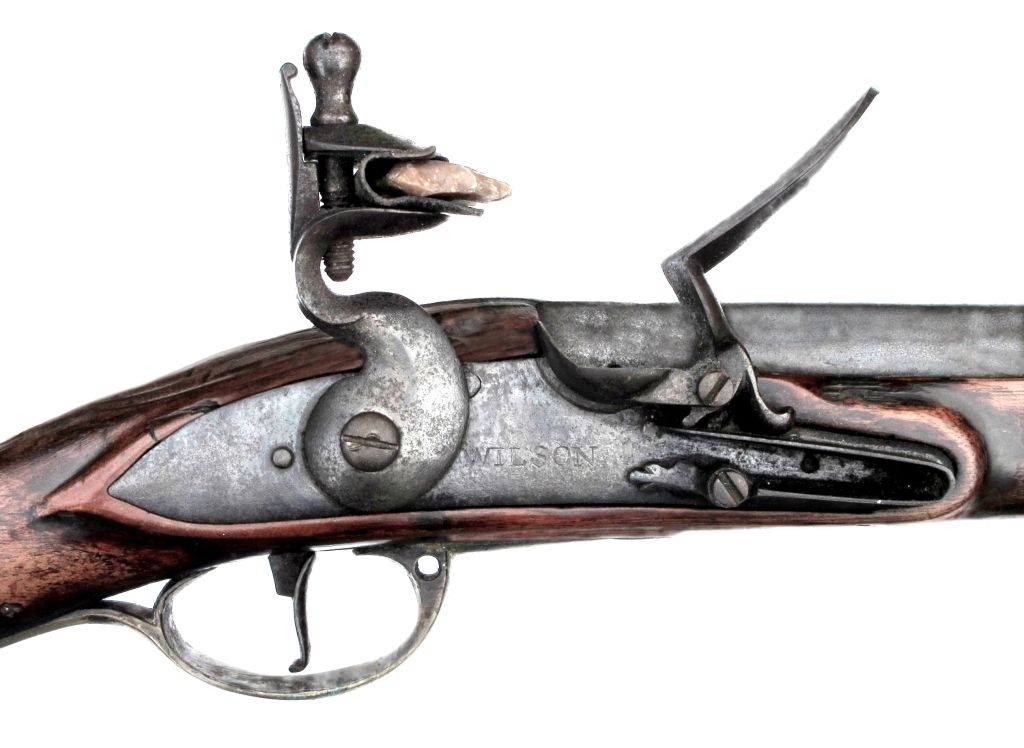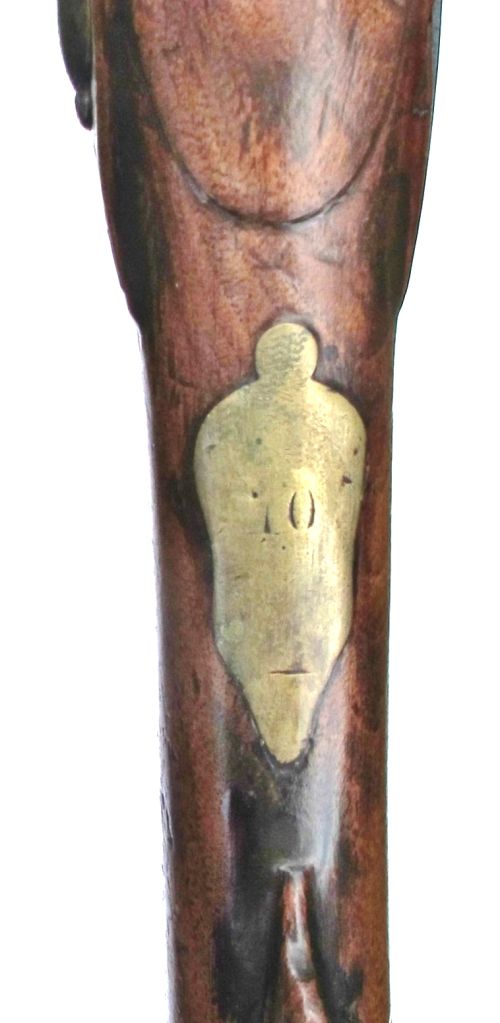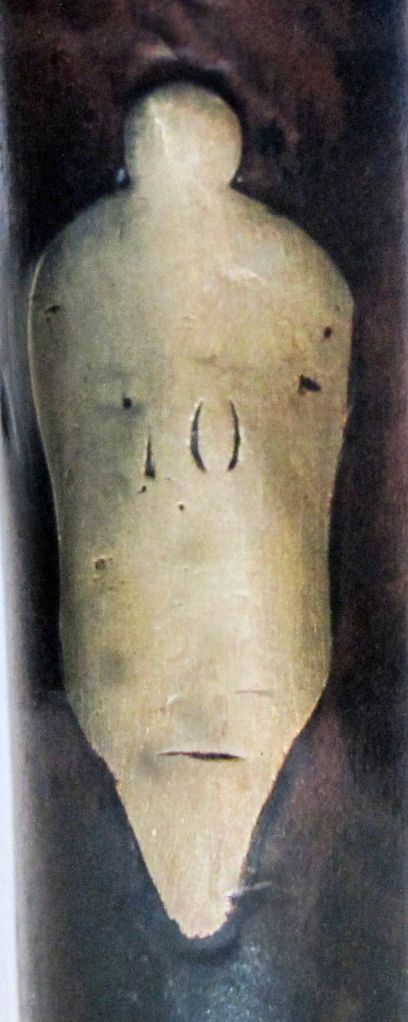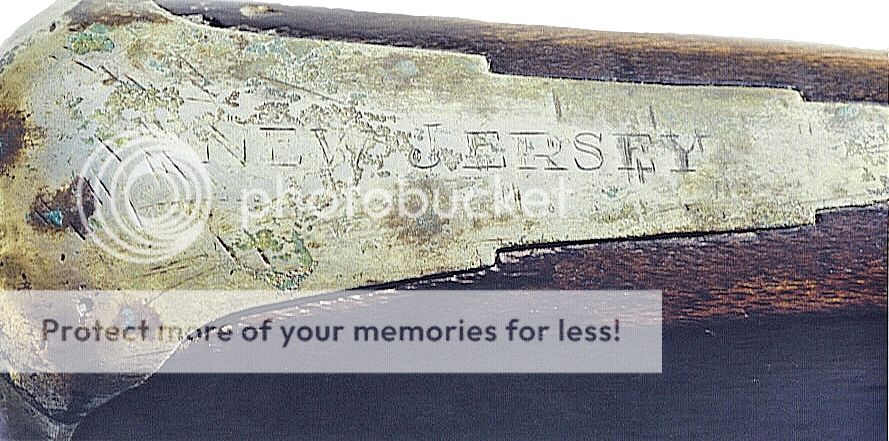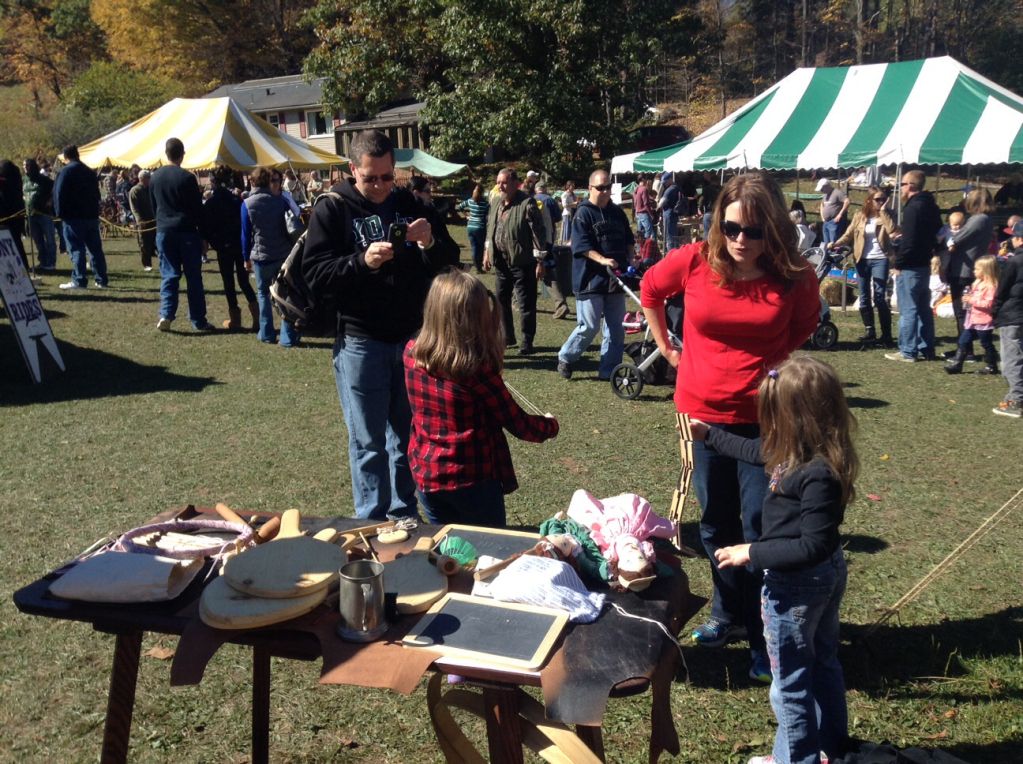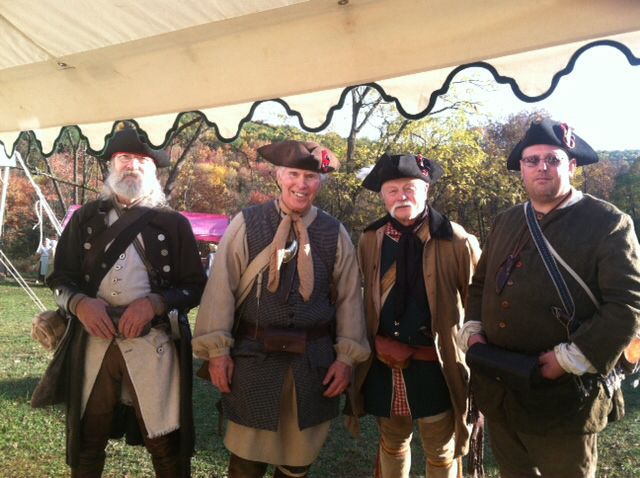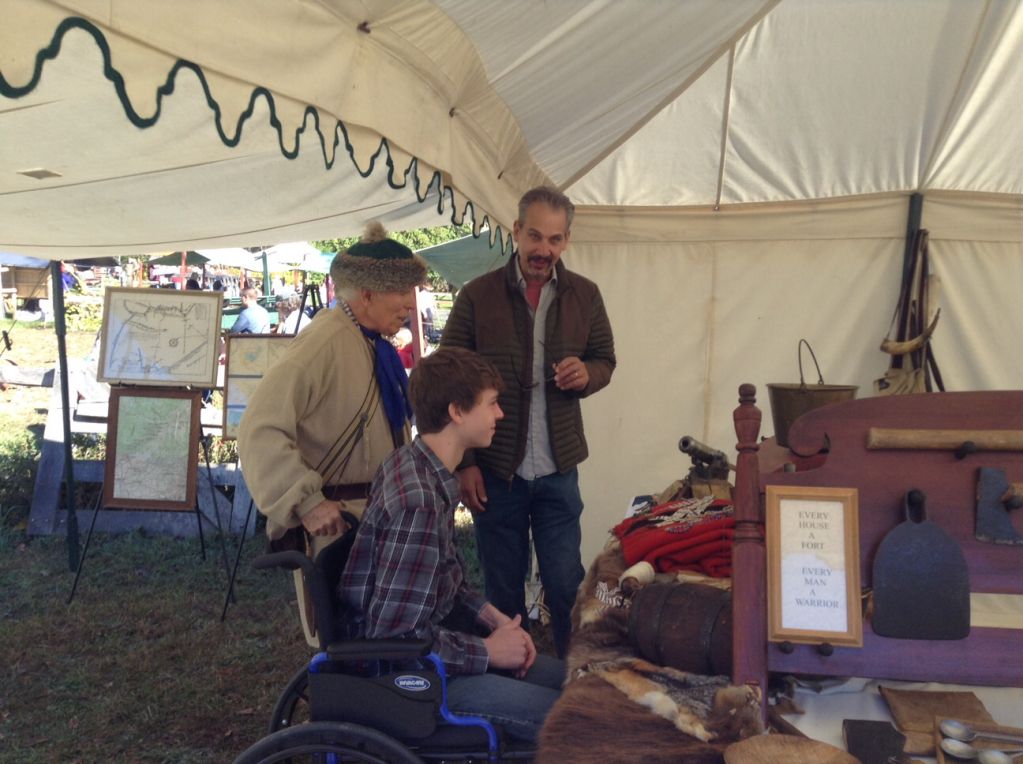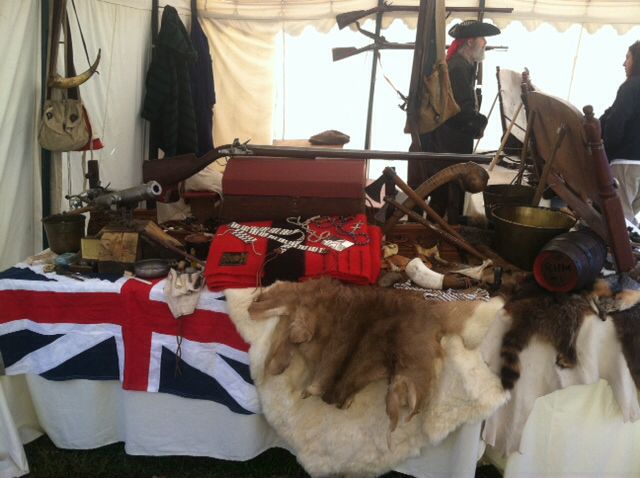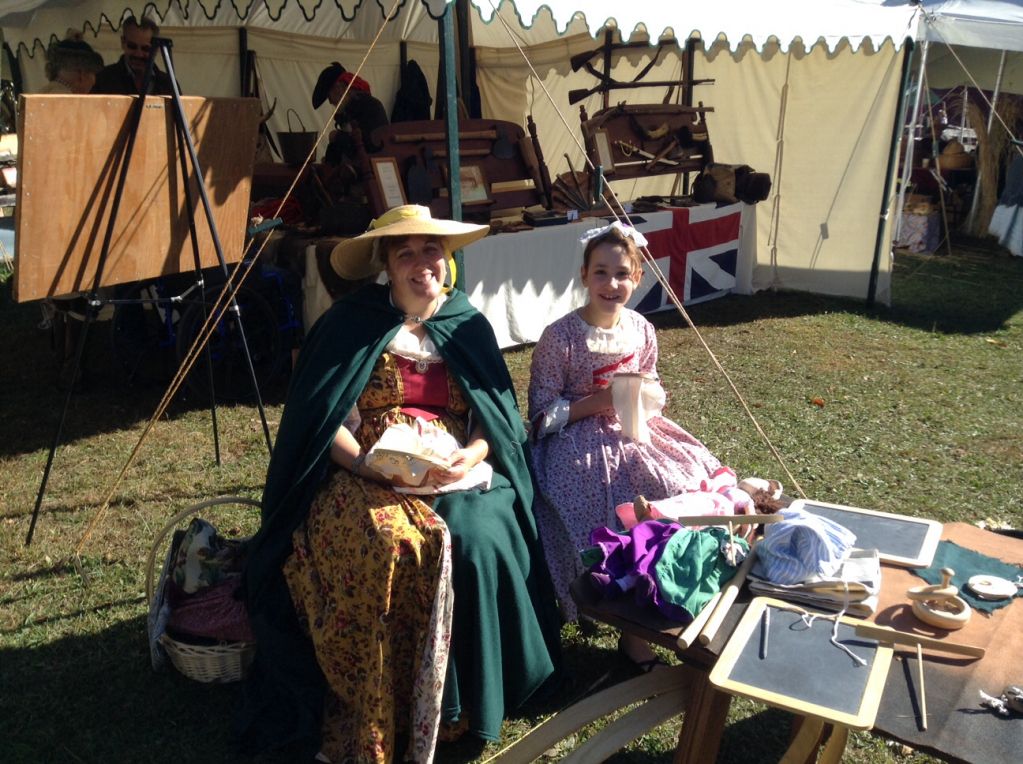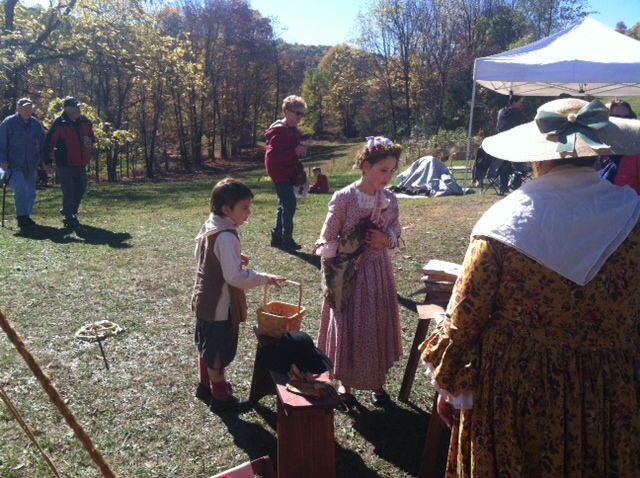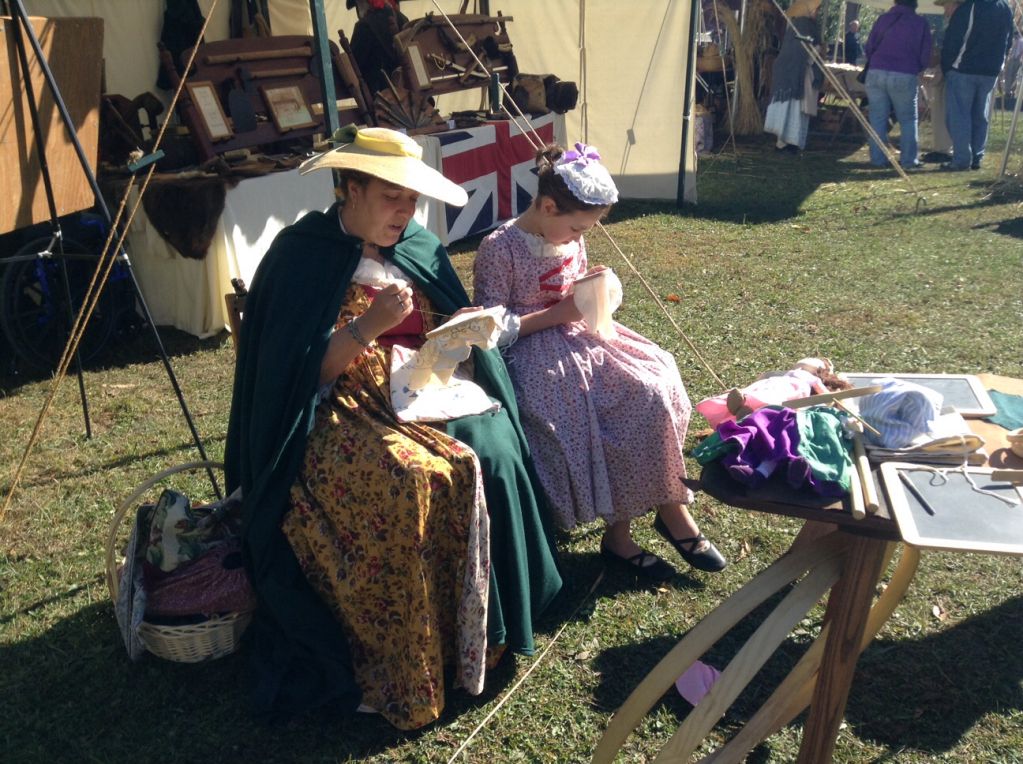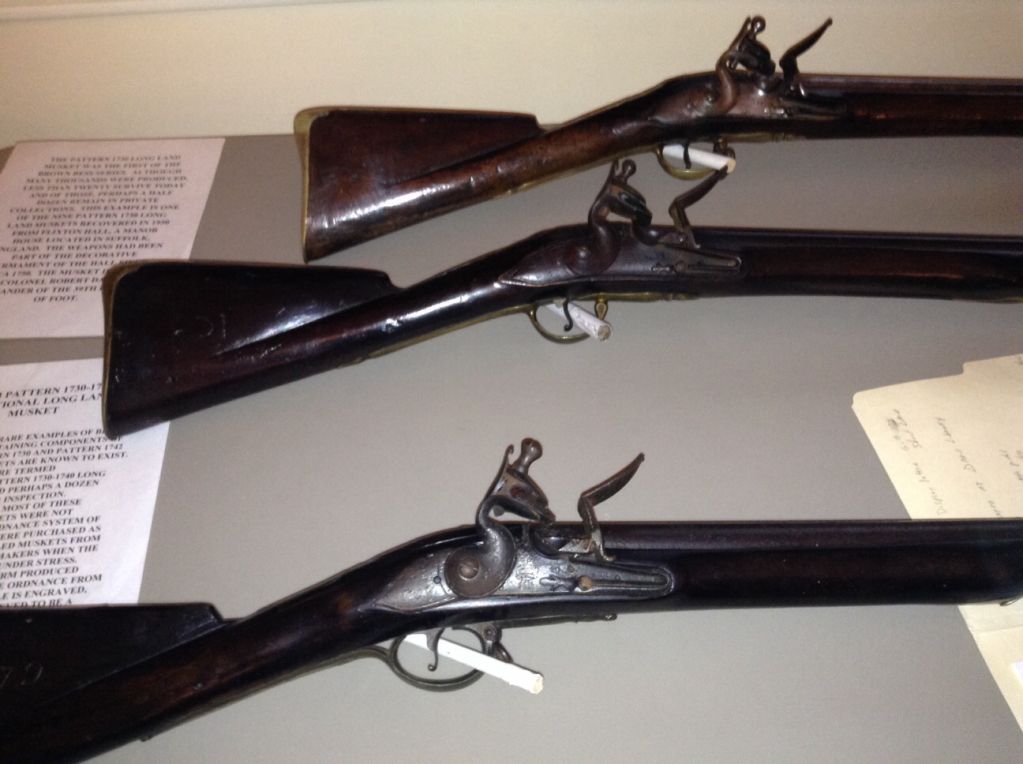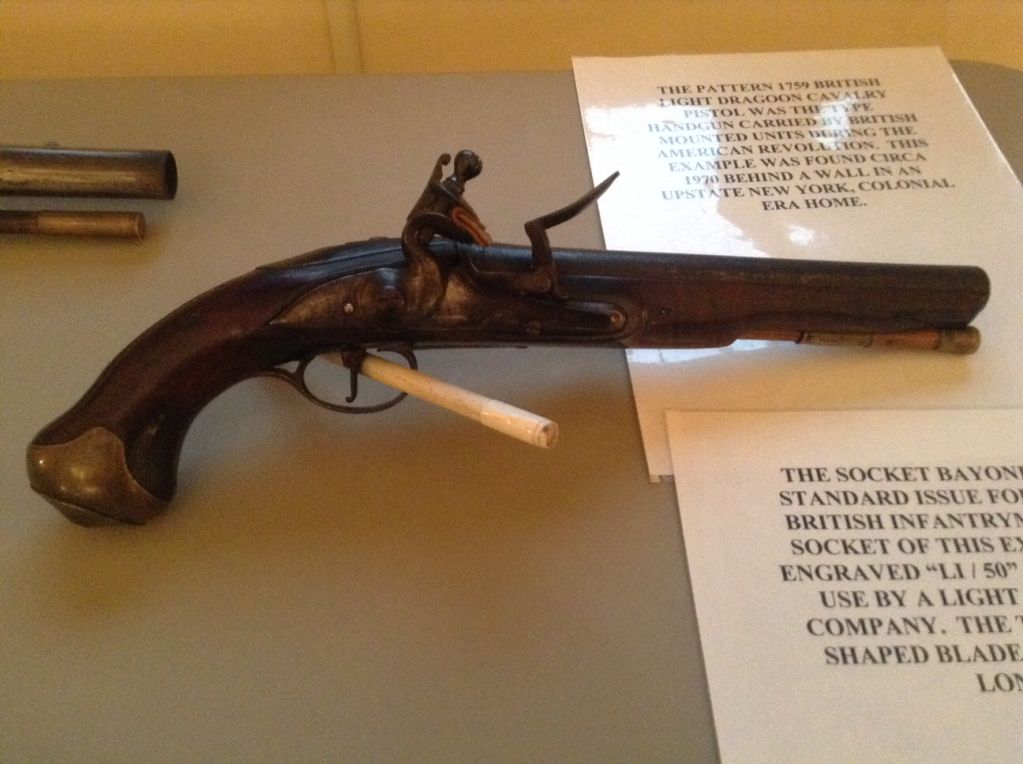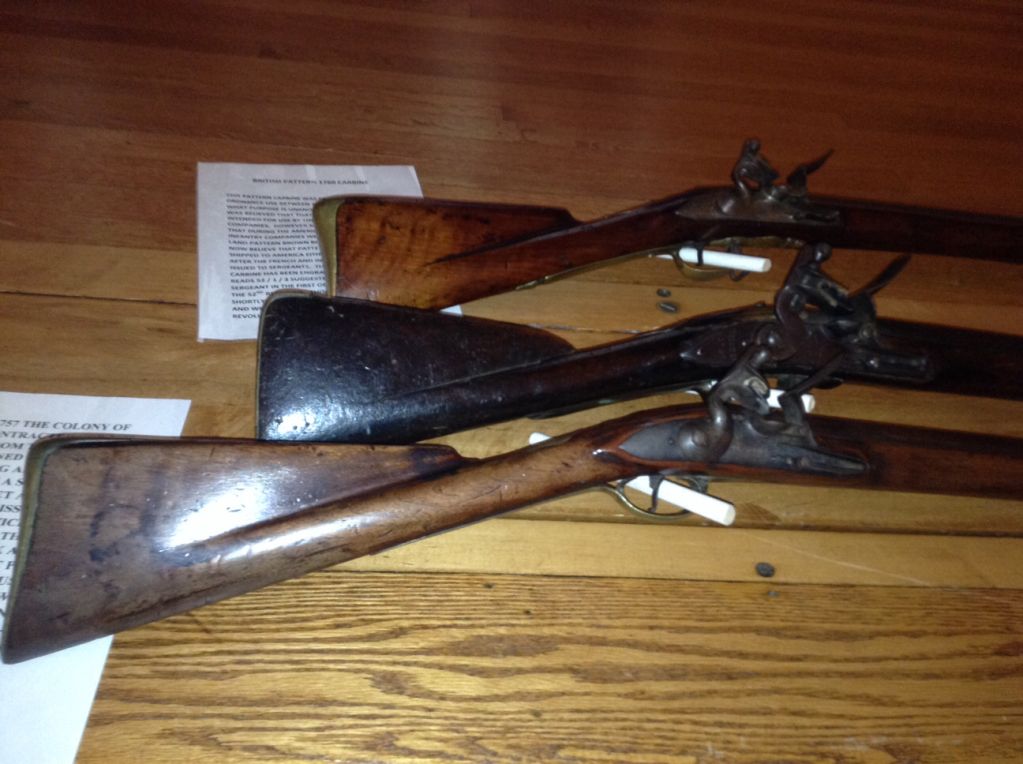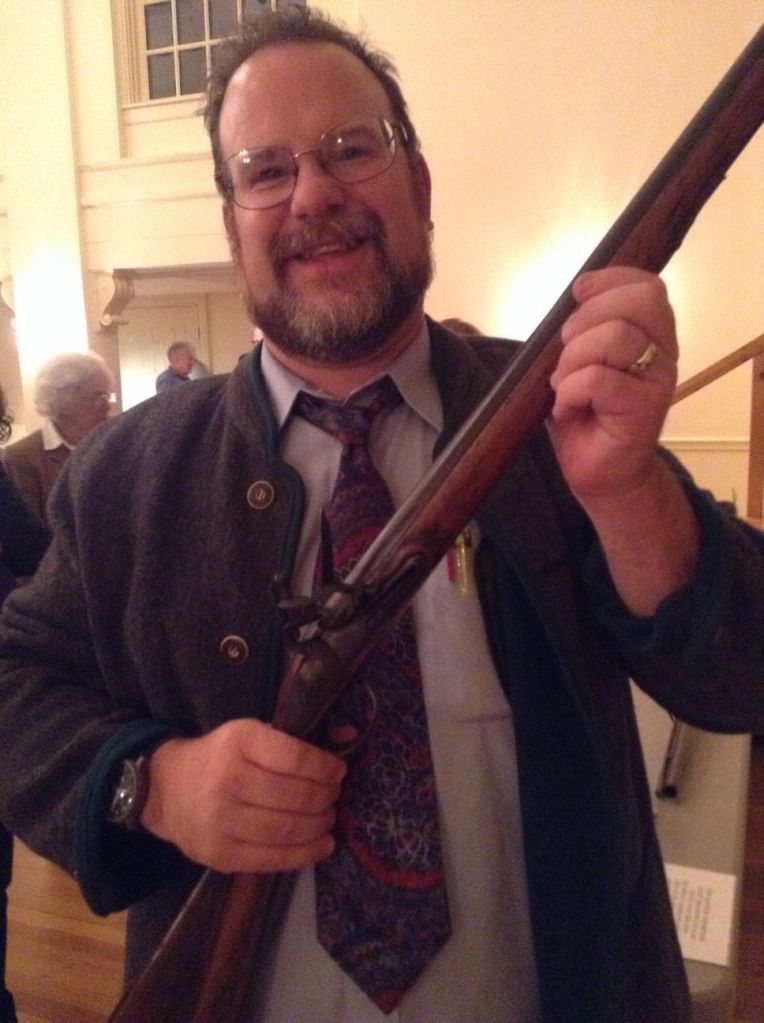On Sunday the Frontier Guard set up a display at the Van Campen Inn in Walpack, NJ.
The inn, at the intersection of the old Military Road that ran from Elizabeth Town to the Delaware River and the Old Mine Road along the Delaware River, is a stone building that dates back to the 1740s, and thus was an important location on the frontier during the French and Indian War. In fact, the Headquarters Fort of the Frontier Guard, Ft. Johns, was located on a rise directly behind the Van Campen Inn (Some sources claim that the Inn itself served as Fort Johns, but that doesn't quite square with the sketch of the fort Hampton drew).
The morning was crisp and windy, but it was sunny, and it warmed up a bit as the day went on.
It was good to see Dom, who retired from the active membership last year, fall in with us again. He's a good guy, knowledgable about the era and a good person to muster with.

The senior corps of the Colonial Musketeers also attended, playing a nice mix of fife and drum pieces. Our junior member certainly enjoyed the music, especially as he got to bang the drum with them.
The Walpack Historical Society gave tours and sold books and refreshments. There were demonstrations of corn shelling, cider pressing, and blacksmithing. The crowds were large, and we were busy all day. People enjoyed themselves, and it was a great event.
